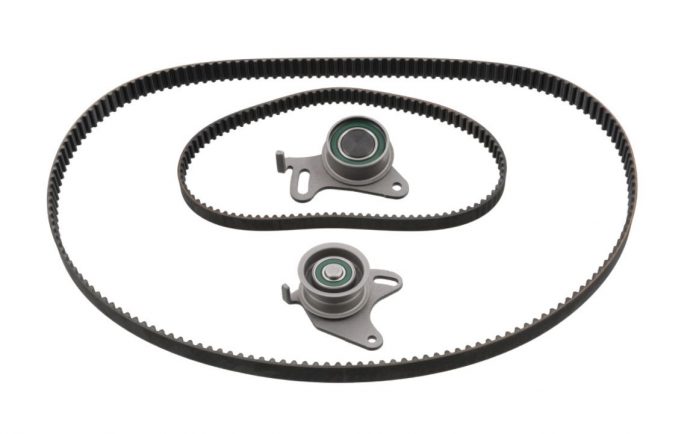In regard to moving components, modern engines require the highest wear resistance – especially direct-injection turbo diesel and gasoline engines. For this reason, they are mainly equipped with timing chains at the factory. The alternative to the timing chain is a timing belt. Due to their material – plastic or rubber – they are lighter and run much smoother. Since they do not have to run in oil, unlike the timing chain, they are often used in smaller vehicles with compact engines.
Please Observe Change Intervals
A clear disadvantage of the timing belt is that it does not last the entire service life of a vehicle. As a result, it must therefore be replaced in a timely manner. If this does not happen, the timing belt can tear meaning serious consequences can occur including engine damage. For this reason, the timing belt should be checked at each inspection or according to the manufacturer’s specifications (e.g. VW every 30,000 km, Seat every 15,000 km). Timing belts that run like timing chains through oil are the exception to this rule. They can reach replacement intervals of 240,000 km or after ten years, e.g. for the Ford EcoBoost engine.
In addition to the timing belt, all adjacent components that directly affect the control process should also be serviced in the workshop. In the case of timing belt control, these are, for example, tensioner pulleys, idler pulleys, water pumps, crankshaft sprockets, camshaft sprockets, or seals.
Damage Patterns and Their Possible Causes
| Extraction of teeth | Too little voltage or leakage from the engine (leakage of coolant or oil) |
| Bar wear and sprocket withdrawal | Running-in crankshaft sprocket |
| Teeth wear | Aging, excessive heat, idler roller/tensioner pulley difficult to move |
| Cracks on the back | Aging, excessive heat, idler roller/tensioner pulley difficult to move |
| Uniform fracture/crack | Kinking of the timing belt before or during installation, lever tool used during installation, effects of external influences e.g. stones |
| Timing belt crack | Defective pulley due to foreign objects |
| Separation of the teeth on the timing belt | Blockage of a moving part, missing oil lubrication in the area of the cylinder head, hydraulic cam follower seized up |
| Timing belt runs off sideways | Misalignment due to a defective tensioner pulley |
More Protection Thanks to Coating
The demands placed upon timing drives are constantly increasing and lead to the continuous, further development of timing belts. For example, some timing belts are coated with polytetrafluoroethylene – or, put more simply, Teflon. Thanks to the coating, friction and wear are reduced. This in turn increases the service life of the belt, especially in the case of high-performance motors. The coating can vary in color, but this has no effect on the function.
Some timing belts have additional fabric on the tooth and/or back which serves to stiffen the belt and to prevent misalignment and thus flank wear. The fabric is joined with a seam which is visible due to the production process. However, this joining technique, which takes place before curing, does not constitute a defect and does not affect the functionality of the belt.




